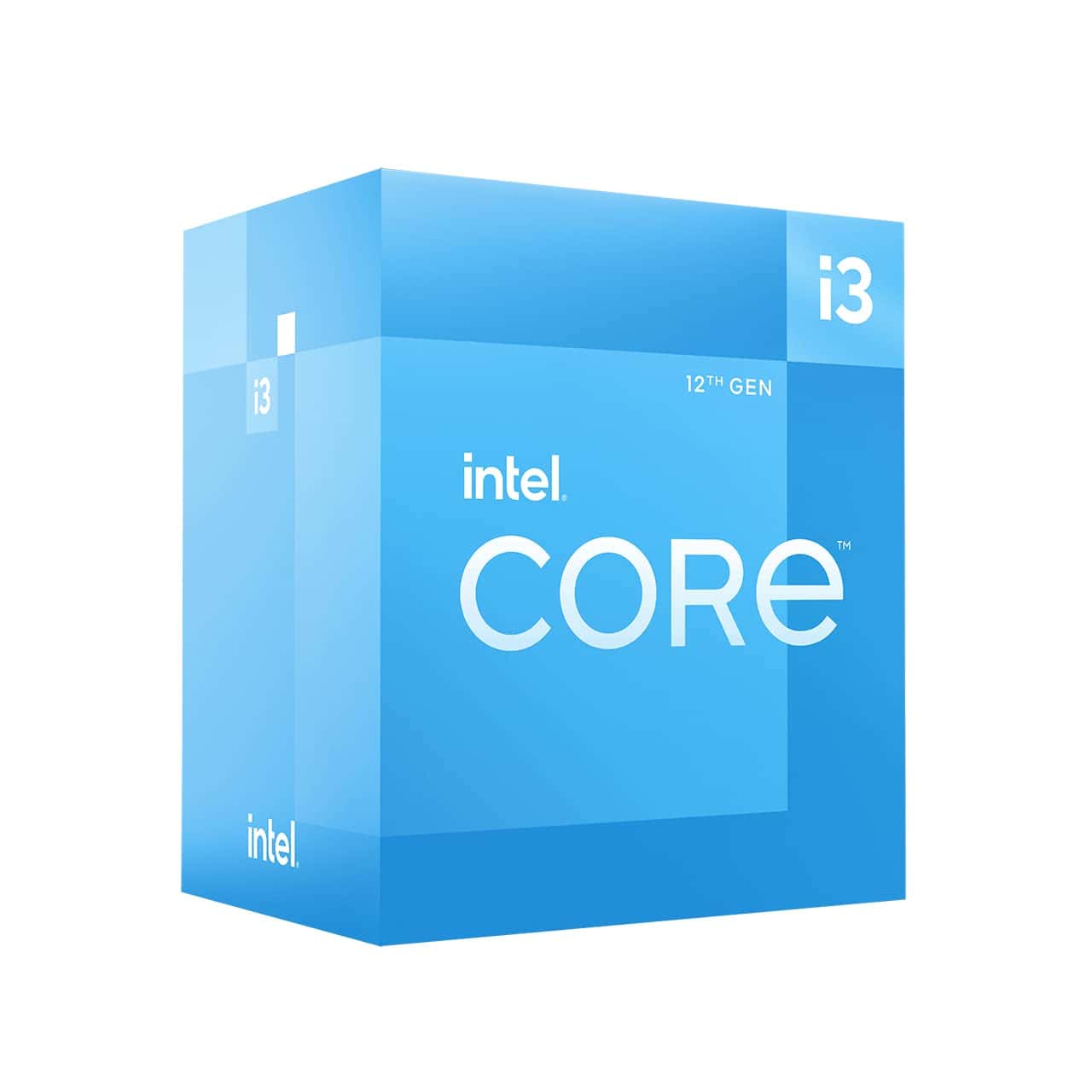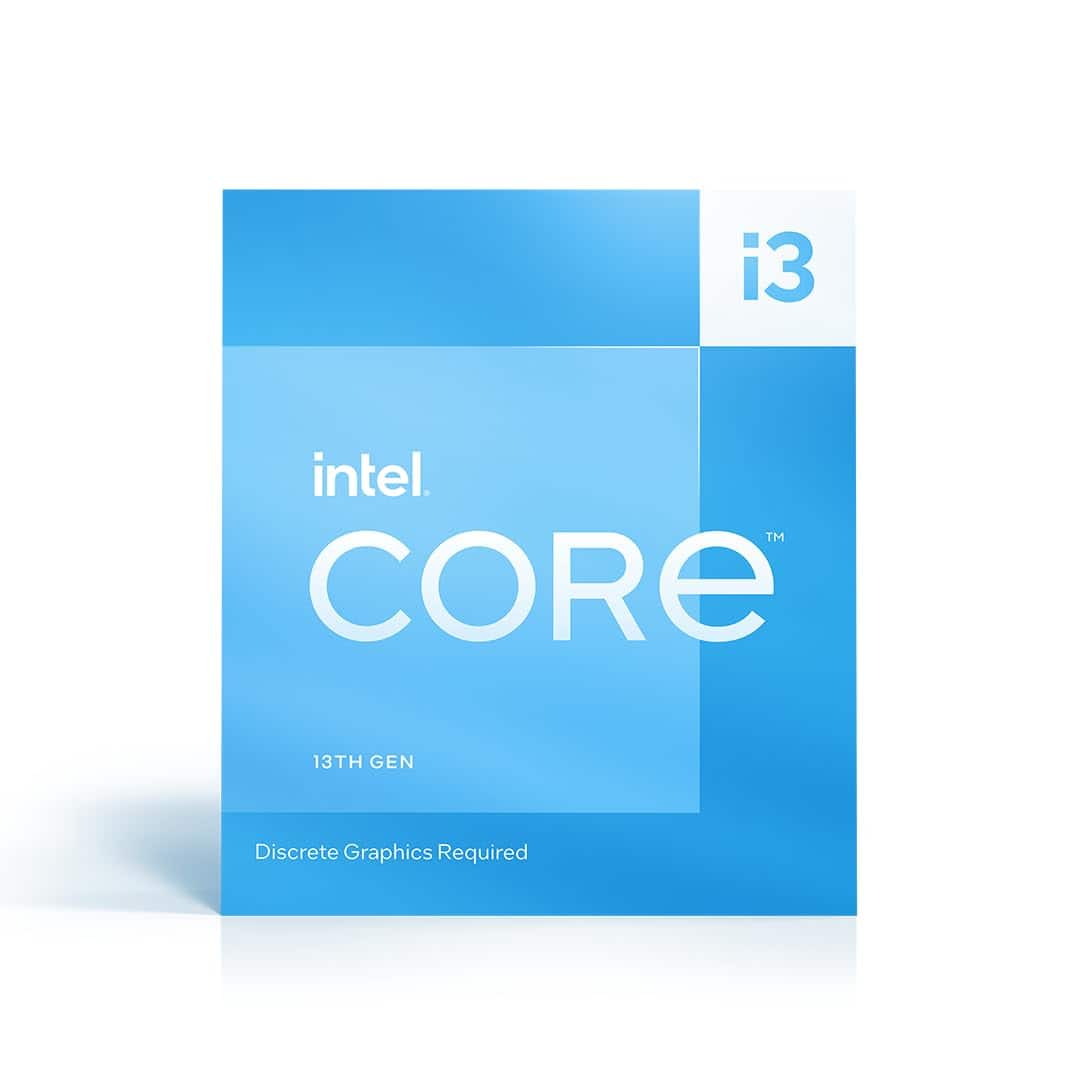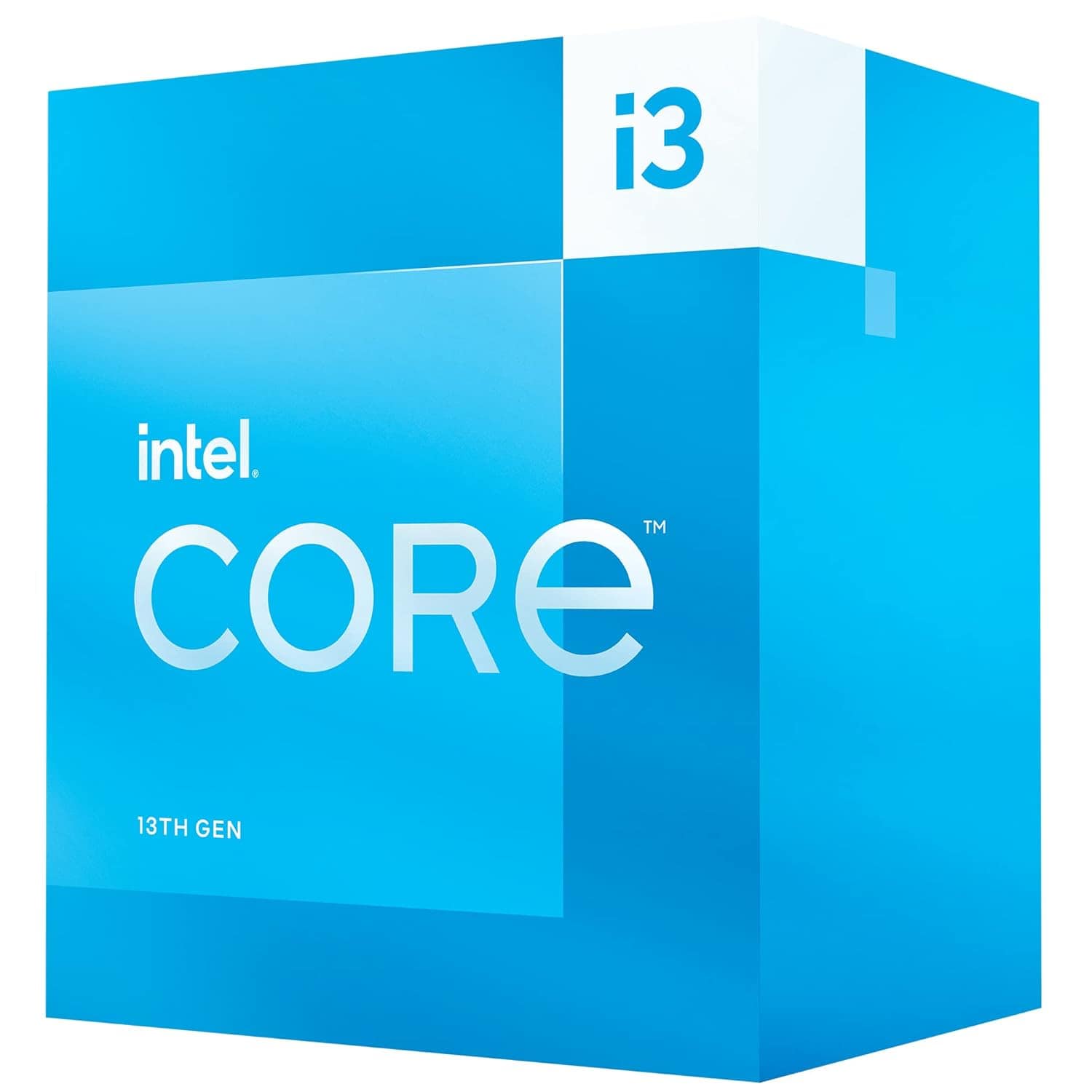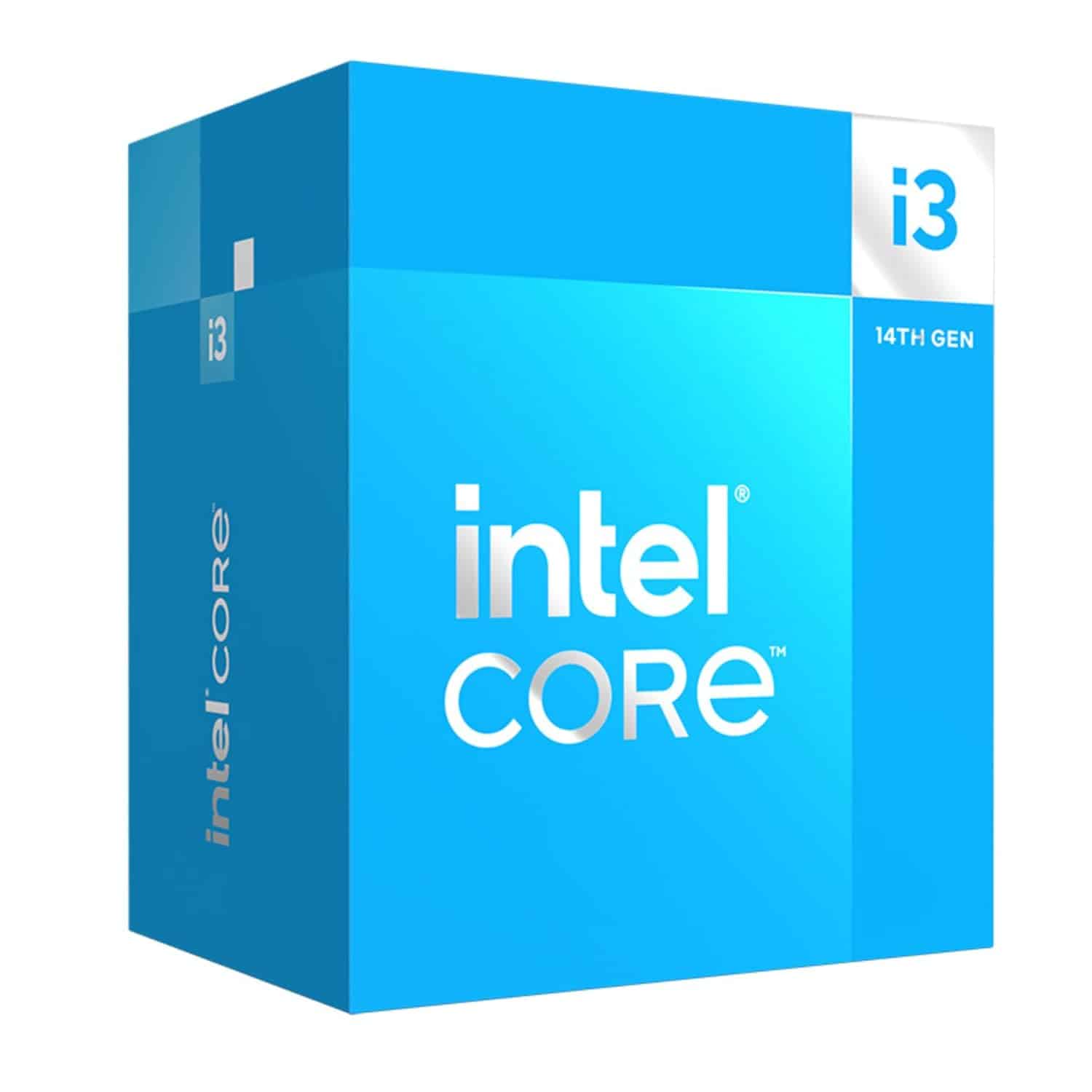Intel’s Core i3 lineup has evolved remarkably over the years, offering budget-conscious consumers reliable performance for day-to-day computing, light gaming, and content creation. In this comprehensive guide, we compare the most popular Intel Core i3 desktop processors from the 10th to the 14th generation, helping you decide which one suits your needs best.
Table of Contents
Intel Core i3 Processors: Pros and Cons
Intel’s Core i3 desktop processors are designed to offer a great balance between affordability and performance, making them a popular choice for entry-level desktop PCs. These chips deliver solid single-core performance, which is especially useful for everyday computing tasks such as web browsing, office applications, light photo editing, and casual gaming. The latest generations, like the i3-13100 and i3-14100, offer support for both DDR4 and DDR5 memory, PCIe 5.0, and come equipped with integrated UHD Graphics, making them ideal for users who don’t need a discrete GPU.
Pros:
- Excellent value for budget-conscious users.
- Reliable performance for day-to-day tasks.
- Most models come with integrated graphics (except ‘F’ variants).
- Compatibility with modern motherboards and technologies (DDR5, PCIe 5.0).
- Low power consumption and heat output.
- Included thermal solutions in many variants.
Cons:
- Not suitable for high-end gaming or demanding workloads like video editing or 3D rendering.
- Limited future-proofing due to fewer cores and threads compared to higher-end CPUs.
- ‘F’ variants require a dedicated GPU, which adds to the cost.
- Fewer overclocking capabilities compared to unlocked ‘K’ series processors.
Overall, Intel Core i3 processors strike a fine balance for home users, students, and office environments. They are best suited for those who need a dependable and cost-effective processor without compromising too much on performance for everyday needs.
Also check out post about Top 6 Best Air Conditioners below Rs 30000
This post contains affiliate links. If you make a purchase through these links, we may earn a commission at no extra cost to you.“
Comparison Table
| Processor | Generation | Cores/Threads | Base Clock | Turbo Boost | Cache | Socket | Graphics | RAM Support | TDP |
|---|---|---|---|---|---|---|---|---|---|
| i3-10100F | 10th | 4C/8T | 3.60 GHz | 4.30 GHz | 6MB | LGA1200 | None | DDR4-2666 | 65W |
| i3-10105F | 10th | 4C/8T | 3.70 GHz | 4.40 GHz | 6MB | LGA1200 | None | DDR4-2666 | 65W |
| i3-12100F | 12th | 4C/8T | 3.30 GHz | 4.30 GHz | 12MB | LGA1700 | None | DDR4/DDR5 | 58-89W |
| i3-12100 | 12th | 4C/8T | 3.30 GHz | 4.30 GHz | 12MB | LGA1700 | UHD 730 | DDR4/DDR5 | 60-89W |
| i3-13100F | 13th | 4C/8T | 3.40 GHz | 4.50 GHz | 12MB | LGA1700 | None | DDR4/DDR5 | 58-89W |
| i3-13100 | 13th | 4C/8T | 3.40 GHz | 4.50 GHz | 12MB | LGA1700 | UHD 770 | DDR4/DDR5 | 60-89W |
| i3-14100 | 14th | 4C/8T | 3.50 GHz | 4.70 GHz | 12MB | LGA1700 | UHD 730 | DDR4/DDR5 | 60-89W |
Intel Core i3-10100F: The Budget Workhorse

The 10th Gen Intel Core i3-10100F is a fantastic budget CPU for gamers and general users who plan on using a discrete GPU. With 4 cores and 8 threads, a base clock of 3.60 GHz, and a turbo of up to 4.30 GHz, this processor handles multitasking and light gaming easily. The 6MB Intel Smart Cache ensures that frequently accessed data is quickly retrieved, enhancing performance. Despite its age, this chip remains a top choice for users upgrading older systems without breaking the bank.
It also supports Intel Hyper-Threading and Turbo Boost 2.0 technologies. When paired with an entry-level GPU like GTX 1650 or RX 6500 XT, the i3-10100F delivers surprising gaming performance in titles like Valorant, CS:GO, and GTA V. Its 65W TDP and DDR4-2666 support make it compatible with most existing motherboards and RAM kits.
Pros:
- Proven stable performance
- Affordable and widely available
- Ideal for 1080p gaming with a mid-range GPU
Cons:
- Older architecture (14nm)
- Lower IPC compared to 12th/13th Gen
Intel Core i3-10105F: Small Upgrade, Same Budget Appeal

The i3-10105F is a slightly faster sibling of the 10100F. It bumps up the base clock to 3.70 GHz and the boost to 4.40 GHz. Like the 10100F, it lacks integrated graphics, which allows for lower pricing and is ideal for users who plan to use a dedicated GPU.
This chip is ideal for budget gaming builds, office PCs, or even lightweight editing machines when combined with a decent GPU. Intel Optane Memory and Virtualization Technology (VT-x) further improve system responsiveness, reducing application load times and enhancing multitasking performance.
Pros:
- High turbo frequency
- Good value for office and home use
- Efficient power consumption (65W TDP)
Cons:
- Still lacks integrated graphics
- Limited future-proofing
Intel Core i3-12100F: Modern Power on a Budget

With the 12th Gen Alder Lake launch, Intel introduced a hybrid core architecture. Though the i3-12100F features only 4 performance cores and no efficiency cores, it offers significant generational improvements. Clocked at 3.30 GHz base and up to 4.30 GHz boost, the 12100F delivers near i5-10400 level performance at a much lower cost.
It includes a 12MB cache, supports both DDR4 and DDR5 memory (depending on the motherboard), and is compatible with Z690, B660, and H610 motherboards. This chip performs impressively in eSports titles and even some AAA games when paired with a mid-range GPU. Its lower 58W base power and bundled stock cooler also make it thermally efficient and beginner-friendly.
Pros:
- Excellent performance for price
- Supports DDR4 and DDR5 RAM (based on motherboard)
- Very power-efficient (58W base power)
- Ships with cooling fan
Cons:
- No integrated graphics (requires discrete GPU)
- Limited multi-thread performance for heavier tasks
Intel Core i3-12100: Same Core, Added Graphics

The i3-12100 is similar to the 12100F but includes integrated Intel UHD Graphics 730, making it a perfect choice for office work, HTPCs, or systems where discrete graphics aren’t needed. With the same 4P cores and 8 threads, it provides reliable performance in both productivity and entertainment scenarios.
It supports PCIe 5.0 and DDR5 RAM, ensuring future compatibility. The performance two-core microarchitecture allows the CPU to dynamically assign workloads for maximum efficiency, making the system snappier for users who rely on browser tabs, video calls, and everyday tasks.
Pros:
- Integrated graphics support
- Compatible with 600- and 700-series chipsets
- Ships with cooling solution
Cons:
- Higher cost than the 12100F
- Not ideal for GPU-intensive tasks
Intel Core i3-13100F: More Speed, Better Cache

The 13th Gen i3-13100F carries over the same P-core design but improves clock speeds and power efficiency. With a turbo clock of up to 4.50 GHz and 12MB cache, this chip is built for snappy responses in daily workloads and improved frame rates in GPU-dependent gaming.
This CPU is highly suitable for 1080p gaming when paired with an RTX 3050 or RX 6600, offering smooth gameplay without bottlenecking. The chip’s efficiency and support for faster memory modules give it a significant edge over older i3 models.
Pros:
- Faster than previous-gen i3 processors
- Good for light gaming and productivity
- Affordable upgrade for LGA 1700 users
Cons:
- No integrated GPU
- Minor gains over i3-12100F
Intel Core i3-13100: UHD Graphics 770 for Enhanced Visuals

The i3-13100 mirrors the 13100F but includes Intel UHD Graphics 770, making it a go-to processor for users who don’t require a discrete GPU. It’s excellent for developers, students, and content consumers who want a system that performs well out-of-the-box.
The UHD 770 integrated GPU supports up to 4 monitors, enabling multi-display setups ideal for productivity. Turbo Boost Max Technology 3.0 ensures workload optimization by identifying the best-performing cores and prioritizing them.
Intel Core i3-14100: Latest Tech in Entry-Level Package

Intel’s 14th Gen i3-14100 raises the bar further with turbo speeds reaching up to 4.7 GHz. The 4-core, 8-thread processor features the same architecture but introduces small efficiency and thermal improvements. It supports PCIe 5.0, DDR4/DDR5 RAM, and ships with the Laminar RM1 cooler.
With UHD Graphics 730, this CPU can handle 4K video playback, office work, and light gaming without needing a GPU. Ideal for prebuilt PCs, budget gaming rigs, and home use, the i3-14100 showcases how far Intel’s entry-level CPUs have come.
Pros:
- Cutting-edge memory and I/O support
- Fastest i3 clock speeds yet
- Integrated graphics included
Cons:
- Price slightly higher than 12th/13th Gen
- Still limited to 4 cores
Choosing the Right Intel Core i3 Processor
When selecting a Core i3 processor, consider the following:
- Use Case: For basic tasks and media consumption, models with integrated graphics (12100, 13100, 14100) are ideal. For gaming, opt for “F” variants with a discrete GPU.
- Platform Compatibility: LGA 1200 sockets are supported on older boards, while LGA 1700 supports DDR5 and PCIe 5.0.
- Performance: The newer the generation, the better the IPC (instructions per cycle), clock speed, and overall efficiency.
- Budget: The 10100F and 12100F offer incredible value under budget constraints, while the 14100 offers the best out-of-box experience.
Future of Intel Core i3: What to Expect
As technology evolves, the Intel Core i3 series continues to adapt and offer improved performance for entry-level and budget-conscious users. Intel has consistently refined the architecture and features of the i3 series, incorporating the latest technologies such as PCIe 5.0 support, DDR5 memory compatibility, and enhanced integrated graphics. Future iterations are expected to build on these improvements, offering even better performance-per-watt ratios, more efficient power consumption, and additional support for AI-driven tasks, which are gradually becoming more prevalent in mainstream computing.
One key area where future i3 processors may see advancements is in multi-threading and hybrid architecture. Although current i3 chips primarily use Performance-cores without Efficiency-cores, Intel may eventually introduce a hybrid setup even in lower-tier models. This would bring the benefits of efficient background processing and performance scaling to more users. Additionally, improvements in onboard graphics—such as enhanced Intel UHD and Iris Xe variants—are likely, making i3 systems more capable of casual gaming and creative workloads without the need for a dedicated GPU.
In terms of thermal and power performance, the i3 line has been commendable for desktop PCs with compact form factors. With each new generation, Intel has optimized heat dissipation and power draw, making it easier to build silent, energy-efficient systems. Future Core i3 processors are expected to further enhance thermal profiles and power efficiency, especially as they compete with AMD’s Ryzen 3 lineup and ARM-based chips entering the desktop market.
Software compatibility is another strength of the Core i3 platform. These CPUs typically run Windows, Linux, and other mainstream operating systems smoothly, with full support for virtualization, Intel Quick Sync Video, and trusted execution technologies. As more users turn to cloud computing and virtualization in both professional and academic settings, the demand for capable yet affordable CPUs like the i3 will remain strong.
Moreover, Intel’s roadmap includes deeper integration with AI and machine learning capabilities. While this is currently more visible in their higher-tier CPUs, some of these enhancements could trickle down into i3 models. Expect to see entry-level processors that can handle light AI tasks such as voice recognition, automated video enhancements, and basic content creation using accelerated instruction sets like AVX and DLBoost.
In conclusion, the Intel Core i3 series is not just surviving in the modern CPU landscape—it’s evolving. With the promise of better energy efficiency, smarter architecture, and improved graphics, future i3 processors will continue to serve as reliable, cost-effective solutions for students, home users, office workers, and even light creators. As long as Intel maintains this balance of affordability and innovation, the Core i3 lineup is likely to remain a popular choice well into the future.
Final Thoughts
Intel Core i3 processors continue to be the backbone of entry-level computing. From the 10th Gen 10100F to the 14th Gen 14100, there’s a suitable chip for nearly every type of user. Whether you’re building your first PC, upgrading an old one, or need a reliable CPU for office work or casual gaming, the i3 series delivers robust performance without emptying your wallet.
Stay tuned for our upcoming comparison between Intel Core i3 vs AMD Ryzen 3 — and let us know which processor you’re considering in the comments!